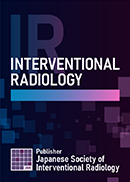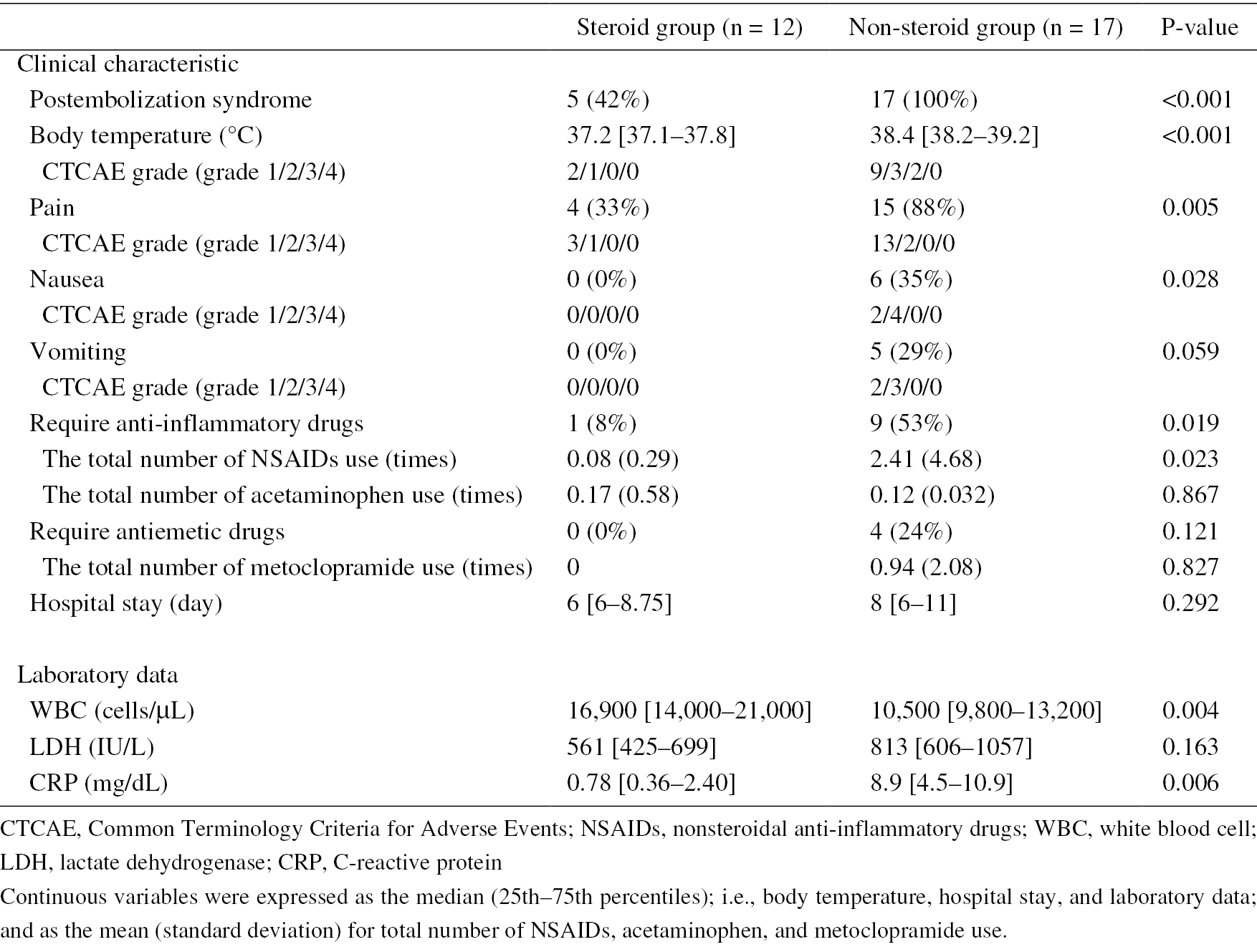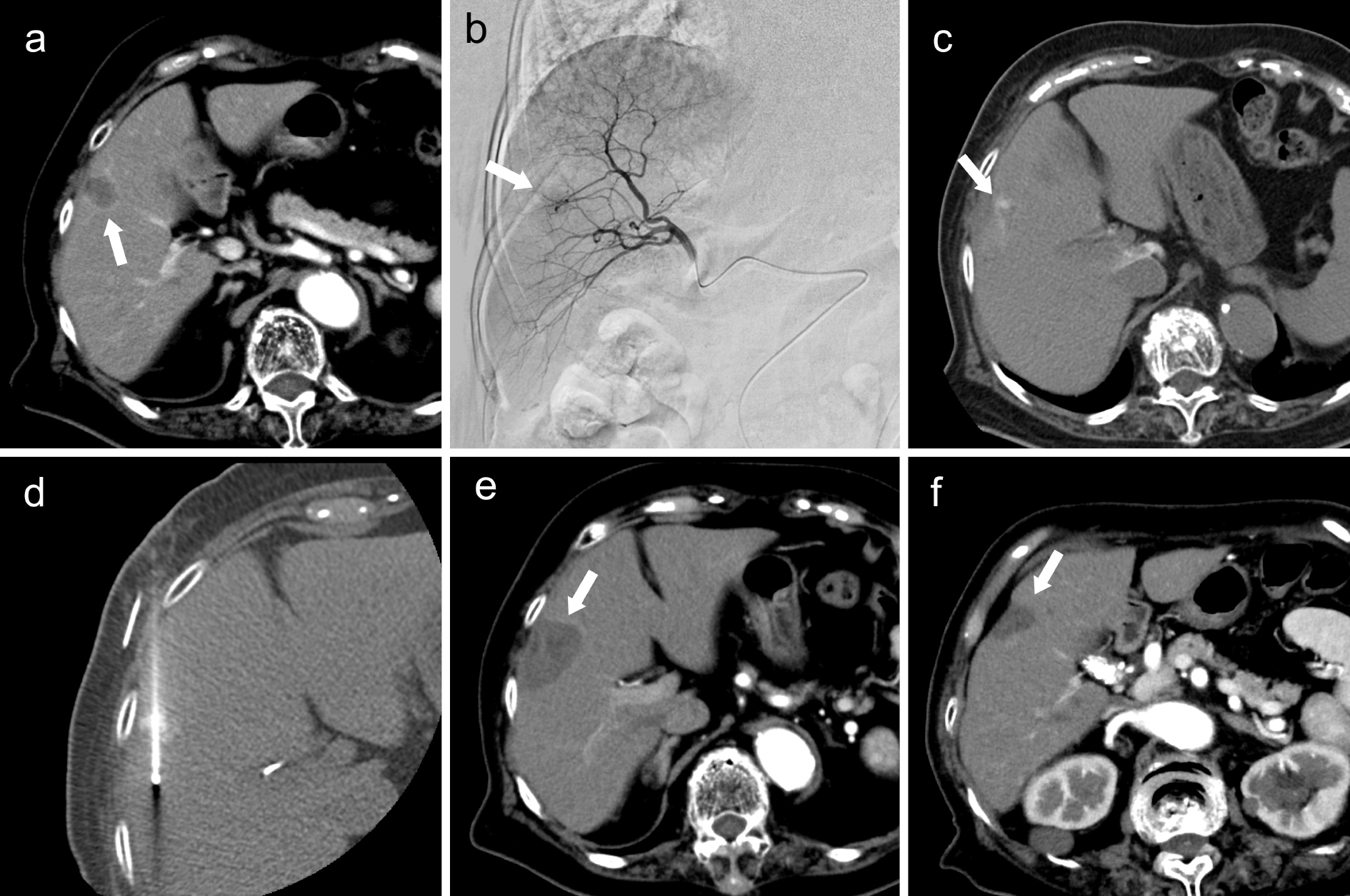Purpose: Postembolization syndrome (PES) after renal arterial embolization (RAE) can reduce the patient's tolerance of the procedure and extend the length of hospital stay. We aimed to assess the efficacy of steroid administration in preventing PES in patients undergoing RAE for angiomyolipoma (AML).
Material and Methods: Between May 2004 and March 2020, 29 RAE procedures in 26 patients with AML were performed. Patient information, including age, sex, tumor size, tuberous sclerosis complex-associated/sporadic AML, hemorrhagic/nonhemorrhagic AML, embolic material, steroid use, medication type, some blood laboratory parameters, hospital stay, and PES occurrence were retrospectively obtained. The prophylactic steroid protocol used in the study was as follows: 250 mg of intravenous methylprednisolone (Solu-Medrol) 2 h before the RAE procedure, followed by 2 days of intravenous prednisolone (Predonine; 2 mg/kg/day), which was tapered by halving the dose every 2 days within the course of 2 weeks. After the discharge, intravenous prednisolone was changed to oral prednisolone (Predonine). PES was defined as the presence of fever, pain, nausea, or vomiting. Data were compared between the steroid and non-steroid groups and between PES and non-PES groups.
Results: The PES incidence rate was 76%, and a comparison between the steroid and non-steroid groups revealed that steroid use significantly decreased the incidence of PES (P < 0.001), including fever (P < 0.001), pain (P = 0.005), and nausea (P = 0.028). The use of anti-inflammatory drugs during the hospital stay was significantly lower in the steroid group (P = 0.019). Moreover, in the steroid group, C-reactive protein level was significantly lower (P = 0.006), whereas white blood cell count was significantly higher (P = 0.004). Conversely, the median length of hospital stay was not significantly shorter in the steroid group (P = 0.292).
Conclusions: The prophylactic use of steroids before and after embolization of renal AML may be effective in preventing PES in this small retrospective study.
View full abstract




